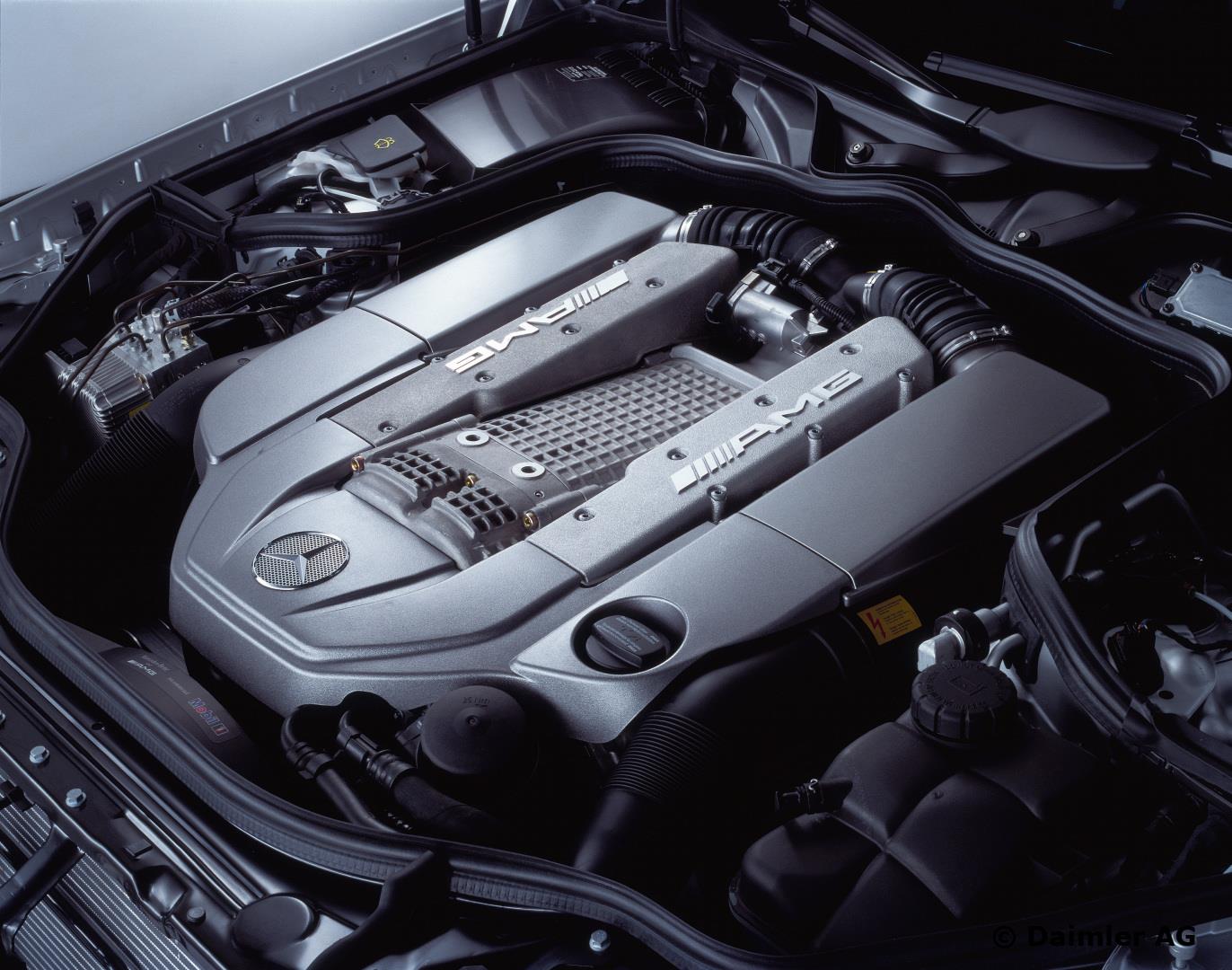The Mercedes-Benz M113 was a V8 petrol engine that was introduced in 1997 to replace the M119 engine. The standard M113 engines were manufactured in Untertürkheim, Germany, though the AMG versions were assembled in Affalterbach, Germany. Closely related to the M112 V6 petrol engine, the M113 engine had cylinder spacing of 106 mm, a 90-degree […]
Category: Engines
Mercedes-Benz M119 engine (1989-1999)
The Mercedes-Benz M119 was a V8 petrol engine that was introduced in 1989 to replace the M117 engine. The M119 engine had an aluminium alloy block with Alusil-coated cylinder walls, an aluminium alloy cylinder head, forged connecting rods, iron-coated cast aluminium pistons, double overhead camshafts per cylinder bank (chain-driven) and four valves per cylinder that […]
Mercedes-Benz M111 engine (1992-06)
The Mercedes-Benz M111 was an inline, four-cylinder petrol engine that was introduced in 1992 to replace the M102 engine. The M111 engine had a cast iron block, a lightweight alloy cylinder head, double overhead camshafts driven by double roller chains, four valves per cylinder actuated by bucket tappets and electronically-controlled fuel injection and ignition. Furthermore, […]
Mercedes-Benz M112 engine
Mercedes-Benz M112 V6 engine The Mercedes-Benz M112 was a six-cylinder V6 petrol engine that was introduced in 1997 to replace the M104 engine. The M112 engine was manufactured in Bad Cannstatt, Germany, though the supercharged 3.2-litre AMG version was assembled in Affalterbach, Germany. Closely related to the M113 V8 petrol engine, the M112 engine had […]
Mercedes-Benz M104 engine (1989-98)
The Mercedes-Benz M104 was an inline, six-cylinder petrol engine that was introduced in 1989 to replace the M103 engine. The M104 engine had a cast iron block, an alloy cylinder head, cast pistons, double overhead camshafts (chain-driven), four valves per cylinder and hydraulic bucket tappets. Furthermore, all M104 engines had camshafts adjusters on the intake […]
Mazda L5-VE engine
Introduction The Mazda L5-VE was a 2.5-litre four-cylinder petrol engine that powered the Mazda GH Mazda6 (2008-12), the Mazda BL Mazda3 SP25 (2009-13) and the Mazda CX-7 (2009-12). Block The L5-VE engine had an aluminium alloy cylinder block with 4340 steel-molybdenum alloy bores for their high heat tolerance and low-friction properties. With 89.0 mm bores […]
Mazda LF-DE and LF-VE engines
Introduction The Mazda LF-DE was a 2.0-litre four-cylinder petrol engine that was first introduced in the 2004 Mazda BK Mazda3. In 2005, the LF-VE engine was introduced in the Mazda NC MX-5; it differed from the LF-DE in that it had variable intake valve timing (Mazda’s ‘Sequential Valve Timing’ or S-VT). For the BK Mazda3, […]
Mazda L3-VDT engine
Introduction The Mazda L3-VDT was a 2.3-litre turbocharged four-cylinder petrol engine with direct fuel injection that was first introduced in the Mazda GG Mazda6 MPS in 2005. The L3-VDT engine was subsequently deployed in the Mazda BK Mazda3 MPS, BL Mazda3 MPS and Mazda CX-7. Block The L3-VDT engine had a precision gravity sand-cast cylinder […]
Mazda L3-VE engine
Introduction The Mazda L3-VE was a 2.3-litre four-cylinder petrol engine that powered the Mazda GG/GY Mazda6 from 2002 to 2007 and the Mazda BK Mazda3 SP23 from 2004 to 2009. Block The L3-VE engine had a precision gravity sand-cast cylinder block that was made of high-grade aluminium alloy, while cast-iron cylinder sleeves were cast directly […]
HSV LS3 V8 engine (2008-17)
Introduction The LS3 was a 6.2-litre pushrod V8 petrol engine that was developed and manufactured by GM and available in HSV models from April 2008 to the present. The LS3 replaced the 6.0-litre LS2 V8 engine. LS3 block Compared to the LS2 engine, the deep-skirt, aluminium cylinder block was strengthened for the LS3 engine. Within […]









